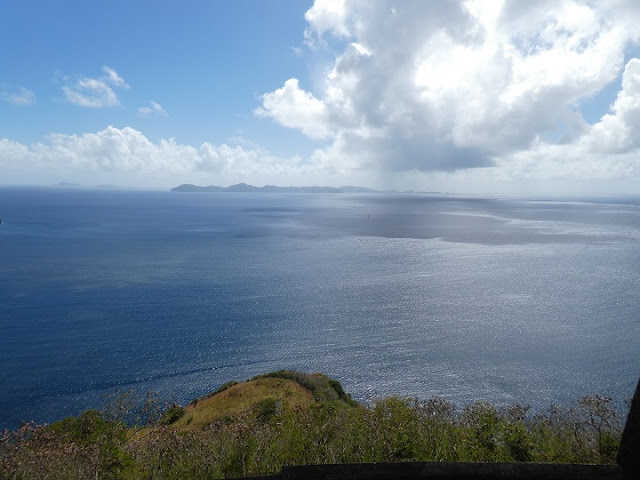After Grenada, we went to Bonaire. This is one of the ABC islands. The ABC islands (Leeward Antilles, Netherland Antilles – old name) comprise Aruba, Bonaire and Curacao and are the 3 westernmost islands of the Leeward Islands in the Caribbean. Bonaire is a special municipality (public body) of the Netherlands.
The ABC islands have very different terrain and vegetation from the rest of the Caribbean islands. They are much flatter and drier with lots of cactus. Also there are many Europeans, mostly Dutch. The islands use US$ and the vehicles are left hand drive. The language is Dutch and Papiamento. This is a Creole language with mixtures of Portuguese and Dutch. Bon bini means welcome in Papiamento. Dushi means everything is good.
Bonaire is a very flat island, mostly coral, with caves, lots of tall cactus, wild donkeys and goats, salt in the south. Very famous for diving. They export salt, but import it for their own use. An eco-island with wind farms. Radio station can broadcast to America.
We arrived at Kralendijk. The town is very small, no high rise, and not much of interest to tourists. There are some colourful buildings and it is all very clean.
I booked a tour. Firstly we went to the north side of the island. We stopped at a lake by the edge of town to see the flamingos, but there weren’t many at all.
Went past the water and oil storage places and out to the Washington Slagbaii national park. The road is very narrow but is a one way system. The vegetation was mostly cactus. Each diving area is marked by a yellow stone, this one has an amusing divers crossing sign.
An osprey holding a fish flew over the van. Stopped at 1000 Steps, about 67 steps down to the coral beach, where we saw Green Sea turtles.
Through Karpata which has been voted one of the best dive sites in the world for several years. Diving is possible 365 days a year on Bonaire and many of the beaches claim to be amongst the best dive sites.
In addition to diving, caving is also possible. There are an estimated 400 caves on Bonaire and these are recognized as important features by the locals. They are formed of Quaternary Limestone. Limestone terraces from fossil coral reefs were formed on top of the basement volcanic rocks. The Caribbean Speleological Society was founded on Bonaire and has an interesting website. Unfortunately I didn't get to see any caves.
Onto Salina Goto, Goto Lake, where we turned inland and followed the lake. Again very few flamingos.
Then to Rincon, once inhabited by the Arawak Indians. Went to Cadushy Distillery and sampled the cactus liqueur. Saw a calabash tree.
The roads are cactus lined. There are lots of wild donkeys on the island, originally brought over by the Spanish for manual labour in the salt fields, but then abandoned when modern technology took over. As they roam free, they cause traffic accidents. A Dutch couple set up a donkey sanctuary, but I got the impression the locals aren't happy about this. Our driver said no donkeys are owned, but this one has a rope collar.
We went back to Kralendijk and then to the south part of the island to see the salt flats. These have a distinctive pink colour, due to algae and bacteria. Brine shrimp thrive on the algae and bacteria and these are eaten by the flamingos, giving them their pink plumage. The salt facility is owned by American Cargill and the salt is transported to the pier for export.



























































